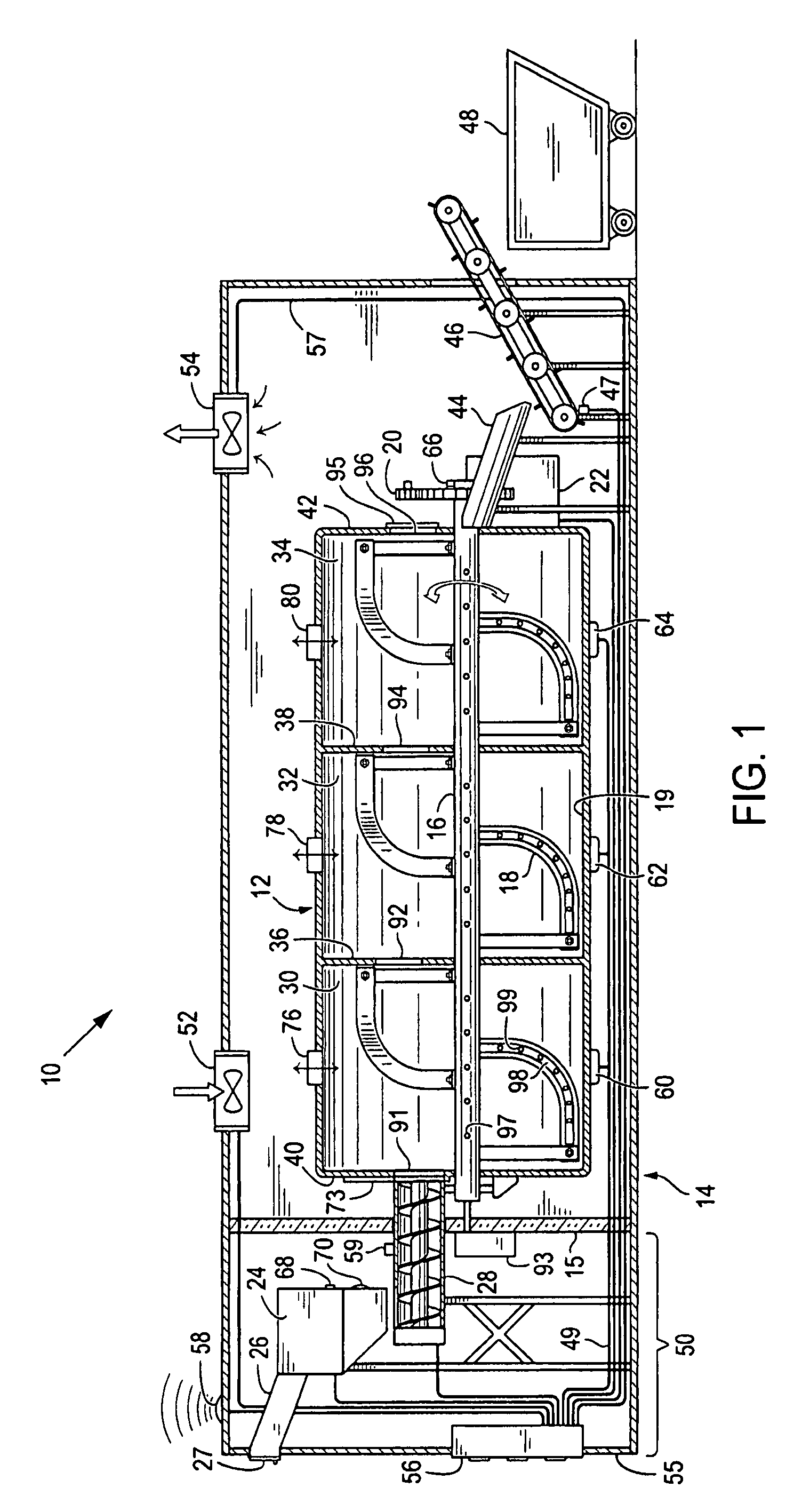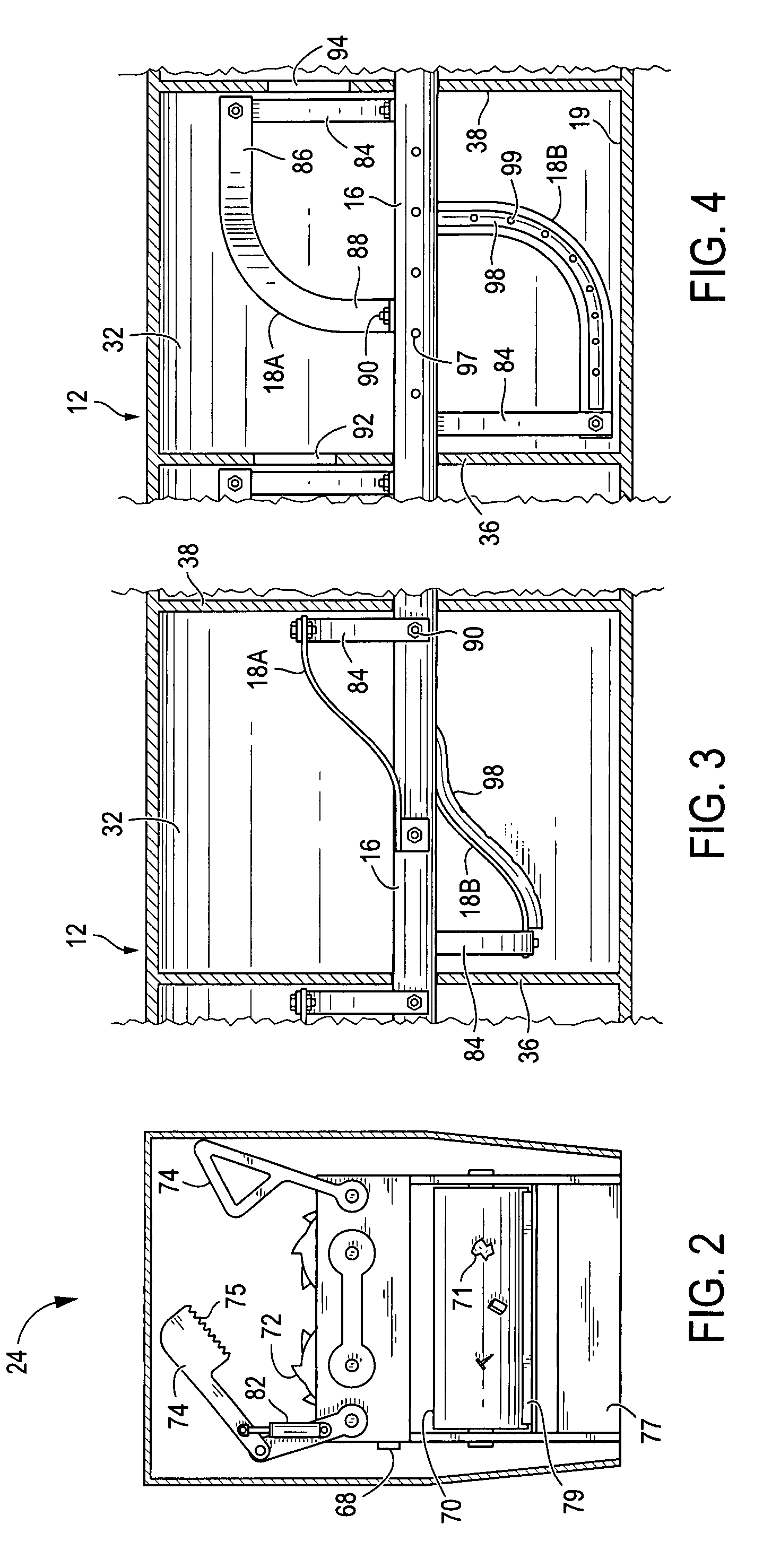Automated composting system
a composting system and automatic technology, applied in biomass after-treatment, grain treatment, products, etc., can solve the problems of ineffective and ineffective implementation of most proposed methods and systems, and inability to achieve widespread or even substantial use. , to achieve the effect of facilitating a progressive composting process and reducing the effective heigh
- Summary
- Abstract
- Description
- Claims
- Application Information
AI Technical Summary
Benefits of technology
Problems solved by technology
Method used
Image
Examples
Embodiment Construction
[0039]As is the case with many inventions, the present invention for an automated composting system is subject to a wide variety of embodiments. However, to ensure that one skilled in the art will be able to understand and, in appropriate cases, practice the present invention, certain preferred embodiments of the broader invention revealed herein are described below and shown in the accompanying drawing figures.
[0040]Looking more particularly to the drawings, a first preferred embodiment of the present invention for an automated composting system is indicated generally at 10 in FIG. 1. There, the composting system 10 is founded on a digestion chamber 12 that is retained in a stationary condition during operation of the composting system 10. In this case, the digestion chamber 12 is disposed within a larger shell housing 14 along with certain other components of the composting system 10 as will be described herein. The digestion chamber 12 and the shell housing 14 certainly could be ...
PUM
| Property | Measurement | Unit |
|---|---|---|
| temperatures | aaaaa | aaaaa |
| temperature | aaaaa | aaaaa |
| temperature | aaaaa | aaaaa |
Abstract
Description
Claims
Application Information
 Login to View More
Login to View More - R&D
- Intellectual Property
- Life Sciences
- Materials
- Tech Scout
- Unparalleled Data Quality
- Higher Quality Content
- 60% Fewer Hallucinations
Browse by: Latest US Patents, China's latest patents, Technical Efficacy Thesaurus, Application Domain, Technology Topic, Popular Technical Reports.
© 2025 PatSnap. All rights reserved.Legal|Privacy policy|Modern Slavery Act Transparency Statement|Sitemap|About US| Contact US: help@patsnap.com



